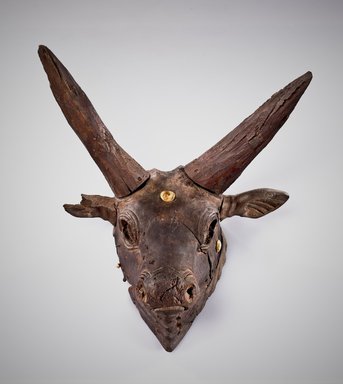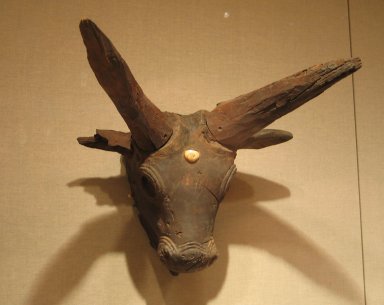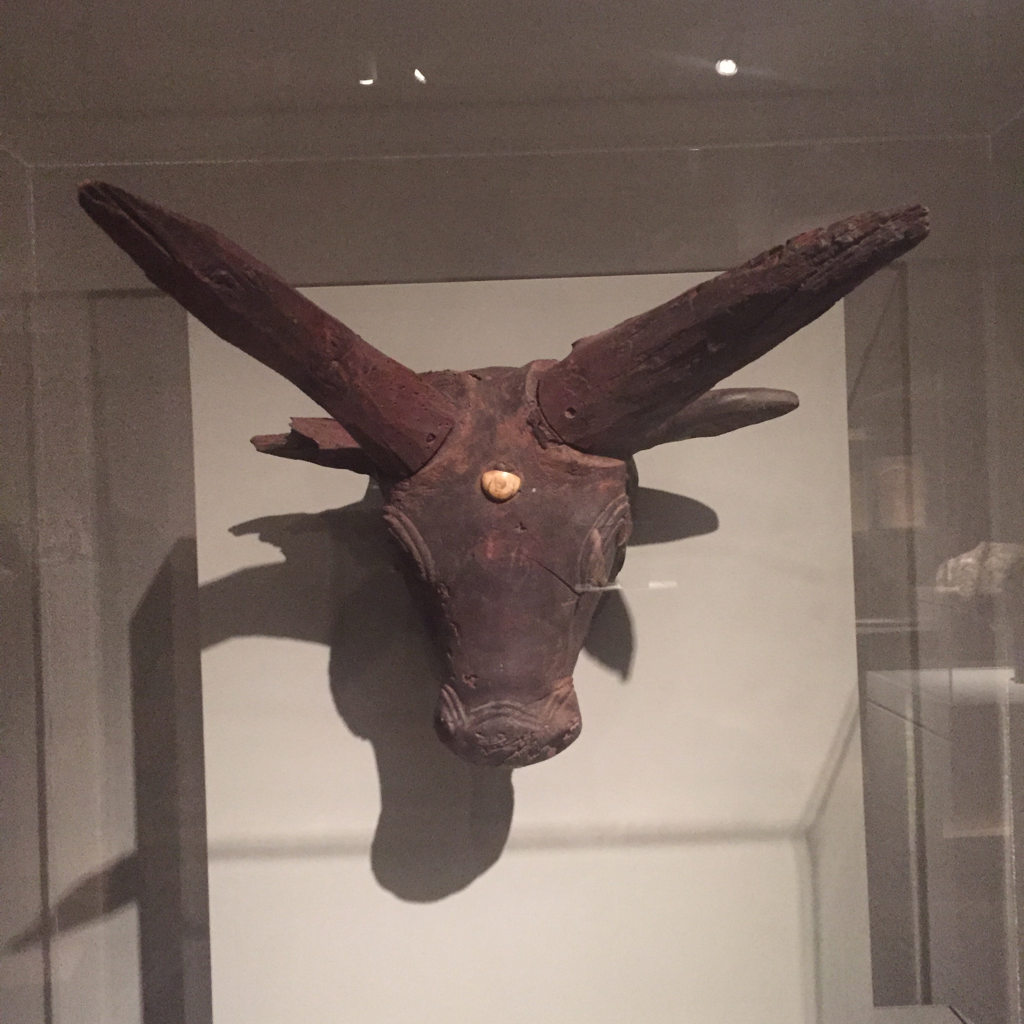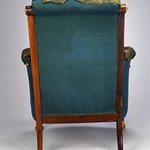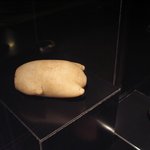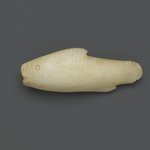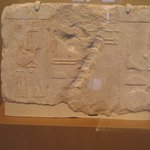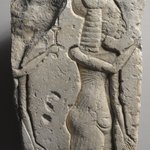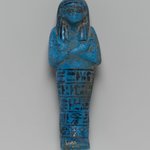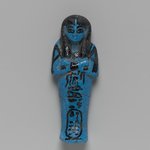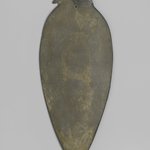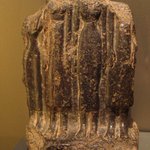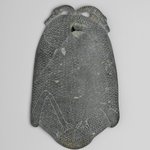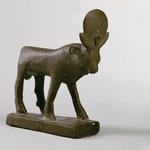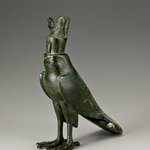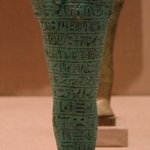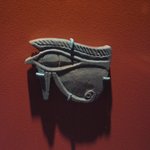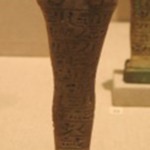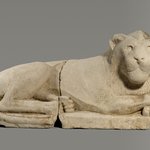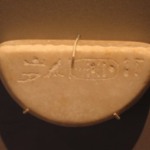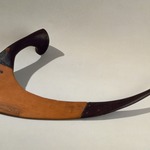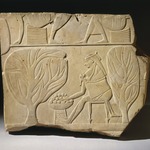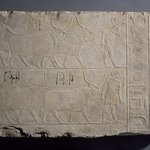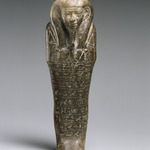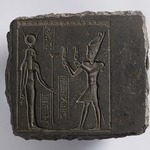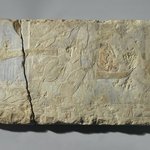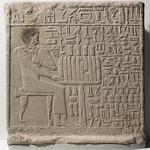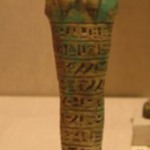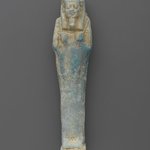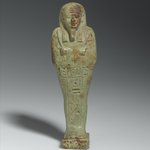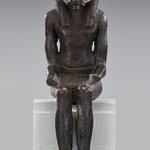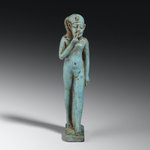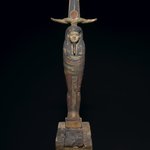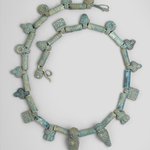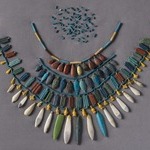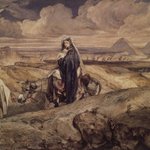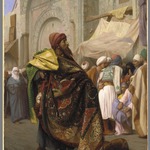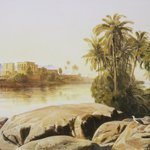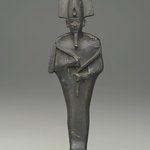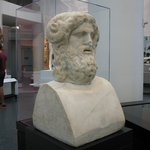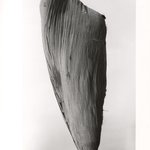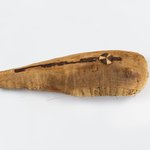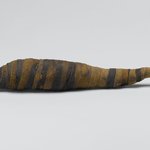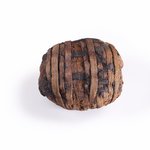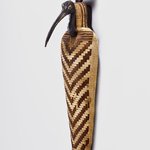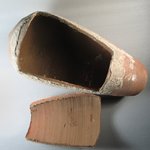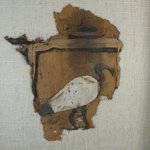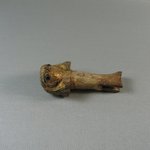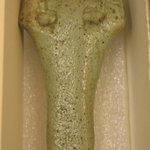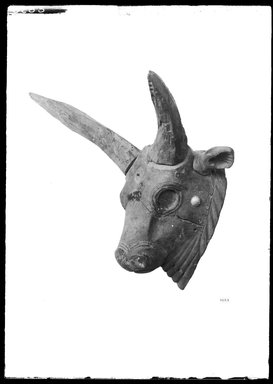

Bull's Head, 664–332 B.C.E. Wood, glass, bone (bovine?), 11 3/4 x 15 x 14 in. (29.8 x 38.1 x 35.6 cm). Brooklyn Museum, Charles Edwin Wilbour Fund, 37.1532E. Creative Commons-BY (Photo: Brooklyn Museum, 37.1532E_NegA_SL4.jpg)
Bull's Head
Egyptian, Classical, Ancient Near Eastern Art
Worship of individual bulls as gods was known from earliest times in Egypt. Bull mummies were buried with early kings. The king was associated with the bull because of its strength and fertility.
Specific bulls, chosen as sacred incarnations of gods, had particular markings. This dark bull with a white mark on its forehead is the Apis bull, an intermediary with the god Ptah.
Specific bulls, chosen as sacred incarnations of gods, had particular markings. This dark bull with a white mark on its forehead is the Apis bull, an intermediary with the god Ptah.
MEDIUM
Wood, glass, bone (bovine?)
DATES
664–332 B.C.E.
DYNASTY
Dynasty 26 to Dynasty 30
PERIOD
Late Period
DIMENSIONS
11 3/4 x 15 x 14 in. (29.8 x 38.1 x 35.6 cm) (show scale)



COLLECTIONS
Egyptian, Classical, Ancient Near Eastern Art
ACCESSION NUMBER
37.1532E
CREDIT LINE
Charles Edwin Wilbour Fund
CATALOGUE DESCRIPTION
The object is a carved, wooden bull head with separately carved ears and horns that insert into the head with mortise/tenon joins. There are three disk-like ivory elements secured to the head: one on the forehead and one on either cheek. There are tenons present on the backside of the head suggesting that it was attached to something else at one time.
Condition: The object is in fair and moderately stable condition.
MUSEUM LOCATION
This item is not on view
CAPTION
Bull's Head, 664–332 B.C.E. Wood, glass, bone (bovine?), 11 3/4 x 15 x 14 in. (29.8 x 38.1 x 35.6 cm). Brooklyn Museum, Charles Edwin Wilbour Fund, 37.1532E. Creative Commons-BY (Photo: Brooklyn Museum, 37.1532E_NegA_SL4.jpg)
IMAGE
unedited master file, 37.1532E_NegA_SL4.jpg. Brooklyn Museum photograph
"CUR" at the beginning of an image file name means that the image was created by a curatorial staff member. These study images may be digital point-and-shoot photographs, when we don\'t yet have high-quality studio photography, or they may be scans of older negatives, slides, or photographic prints, providing historical documentation of the object.
RIGHTS STATEMENT
Creative Commons-BY
You may download and use Brooklyn Museum images of this three-dimensional work in accordance with a Creative Commons license. Fair use, as understood under the United States Copyright Act, may also apply.
Please include caption information from this page and credit the Brooklyn Museum. If you need a high resolution file, please fill out our online application form (charges apply).
For further information about copyright, we recommend resources at the United States Library of Congress, Cornell University, Copyright and Cultural Institutions: Guidelines for U.S. Libraries, Archives, and Museums, and Copyright Watch.
For more information about the Museum's rights project, including how rights types are assigned, please see our blog posts on copyright.
If you have any information regarding this work and rights to it, please contact copyright@brooklynmuseum.org.
RECORD COMPLETENESS
Not every record you will find here is complete. More information is available for some works than for others, and some entries have been updated more recently. Records are frequently reviewed and revised, and we welcome any additional information you might have.
